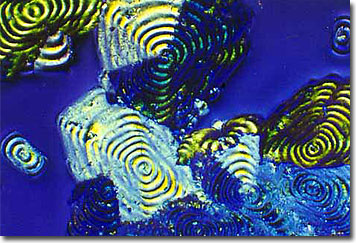Loes Modderman
Acetylsalicylic Acid
Acetylsalicylic acid is the world's most widely recommended drug, and is more popularly known by the name aspirin. As an over-the-counter pharmaceutical, this chemical substance is commonly used in the treatment of a myriad of ailments including aches, pains, fever, and swelling.

Aspirin was originally derived from salicin, which is an ingredient in the bark of willow trees. For centuries, this bitter, powdery substance was used as a popular remedy in folk medicine, and it was used to ease the aches and pains associated with childbirth, as well as to reduce fever.
Salicylate, the active ingredient in aspirin, can often be a stomach irritant when taken alone. In 1897, a chemist at Friedrich Bayer & Co., Felix Hoffman, was the first to combine salicylic acid with an acetyl chemical group, effectively reducing the acidic effects of aspirin, along with the adverse consequences to the digestive system.
Various pain and inflammation reducing abilities of acetylsalicylic remained an unsolved puzzle for many years. Current theory holds that aspirin works by interfering with the conversion of certain enzymes into prostaglandins, which are hormone-like molecules that accompany fever and inflammation. Recent studies indicate that the chemical components of aspirin physically plug the receptors on enzymes where arachidonic acid would normally attach. Without the assistance of arachidonic acid, target enzymes fail to produce inflammation-producing prostaglandins.
Currently, scientists are investigating the ability of acetylsalicylic acid to act as an effective anticoagulant. In addition, aspirin's blood-thinning qualities have generated a great deal of interest, and the substance's application in the treatment of heart attacks and strokes is an issue of current debate in the medical field as well.
BACK TO LOES MODDERMAN GALLERY
